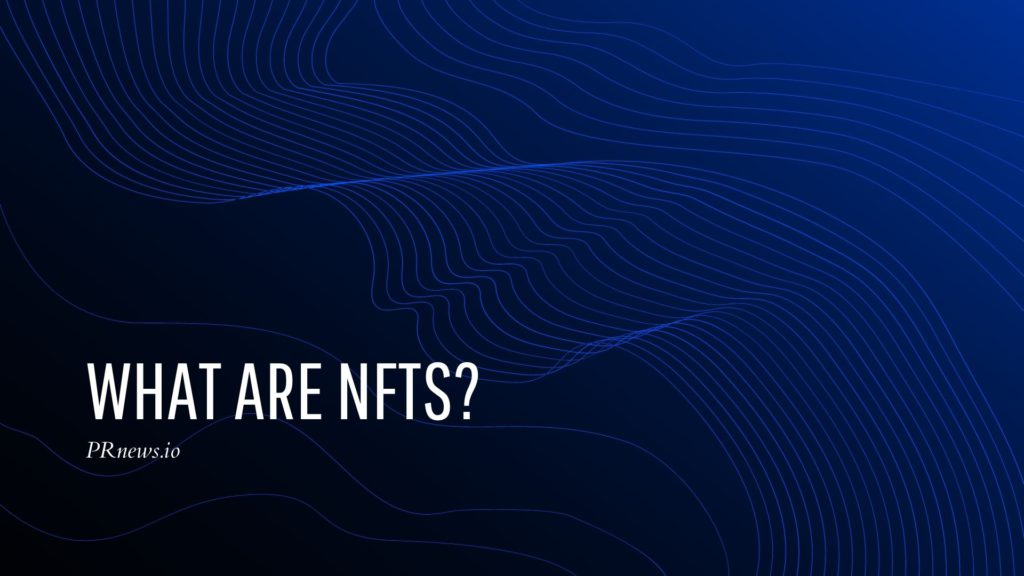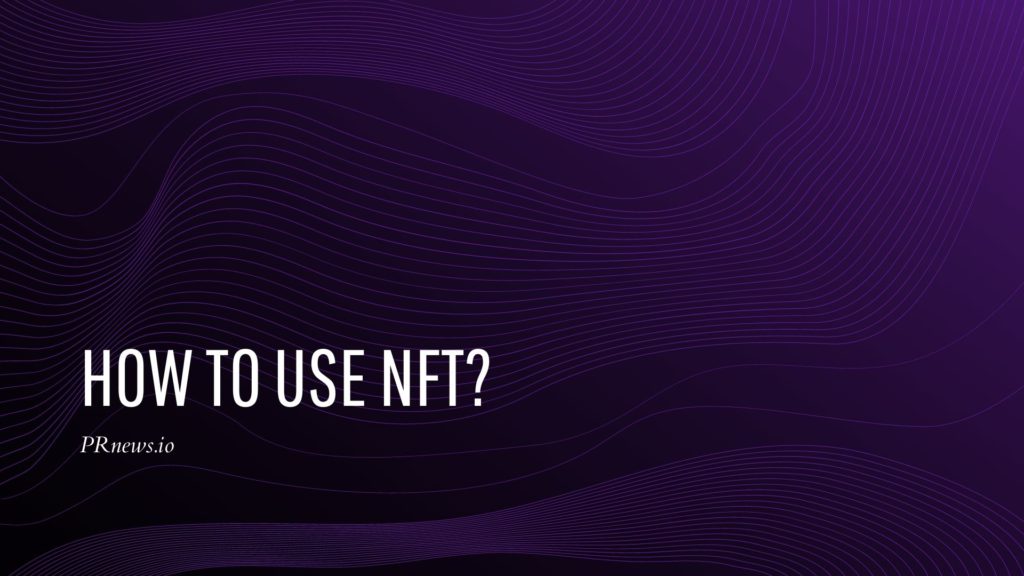Non-fungible tokens are a comparatively new area in crypto, and the NFT topic is booming. Instead of having a piece of art and keeping it in your safe where nobody will ever see it, now you can prove to the world your ownership with this NFT marketing guide.
Since NFT is a niche within blockchain and crypto, most agencies can’t execute good NFT marketing campaigns. This guide explains all you need to know about NFTs, including what they are, how they work, and how to boost them.
What are NFTs?

NFTs are the non-fungible tokens.
But that didn’t make it any clearer, right?
Non-fungible tokens are a special kind of cryptographic token that stands for a unique digital asset. It is created with blockchain technology and works just like bitcoin (and other cryptocurrencies). It’s functioning with networked computers racing each other to solve complex mathematical actins to encrypt a set of data and produce a private cryptographic key. The only difference is that this key is non-fungible, which means that the tokens are not mutually interchangeable.
NFTs are tokens for approval possession of digital assets and not the assets themselves. Just like knowing the unique serial number for a particular Tiffany necklace does not necessarily mean I have this jewelry, if you buy an NFT for a piece of digital art, you don’t always get the original product of the said art, which may still belong to its creator.
I want also to explain it another way: if bitcoin tokens are like blockchain-verified dollar bills, then NFTs are like blockchain-verified masterpieces. No one cares which particular 100-dollar bill they have, since all 100-dollar bills hold the same value and that’s why are interchangeable, but the masterpieces can’t be the same and have the same value, both economically and aesthetically. So, during the encryption process, each NFT is allocated a digital hash that differs it from every other NFT of its type. They are like fingerprints, there are no duplicates.
In the boring, technical sense we can say every NFT is a unique token on the blockchain. Most NFTs are part of the Ethereum blockchain. Ethereum is a cryptocurrency, but its blockchain also supports these NFTs, which store extra information that makes them work differently from, say, an ETH coin. But while it could be like a van Gogh, where there’s only one definitive actual version, it could also be like a trading card, where there are 50 or hundreds of numbered copies of the same artwork.
NFTs exist since at least June 2017 when CryptoPunks, a collection of 10k unique digital characters, launched on Ethereum. CryptoKitties, a virtual cat trading game, was the first project that made NFTs well-known in the crypto world when it went viral later that year. Since then, people have already bought NFTs worth $174 million .
NFTs can really be anything digital (tracks, photos, drawings, etc), but a lot of the current exhilaration is around using the tech to sell digital art. NFTs are a type of token that will completely change entire industries by a transformation of the way we share and use everything.
How to Use NFT?

With NFTs, people can own and trade digital assets, which are typical, by design, easily copyable, and widely shareable. NFTs are like an individual promo code that a luxury brand would issue for each of their products to approve their authenticity.
For brand marketers, the ascent of NFTs brings exciting new possibilities in the world of digital goods, digital media distribution, and access management. Let’s look at the functions NFTs may have on each of these domains one by one:
Creating Scarcity and Value for Digital Goods
Digital items have been around for a while and are especially demanded in eSports and video games.
As eGaming conquers the world and more spheres of our lives happen in these digital spaces, brands need to start thinking about digital possessions and how to use NFTs to create limited editions of brand assets and build hype. For example, Fortnite, a free-to-play game, generated $1.8 billion in revenue in 2019, a big portion of which came from selling in-game items.
Most NFTs are assigned to collectible items like digital art and other virtual goods in video games, but they could expand to create more digital assets. Event ticketing, real estate, brand licensing, and even tokens of real-world assets may be used there. E.g. Nike has patented shoes as NFTs called CryptoKicks, which allows users to ‘breed’ different shoes to create individual sneakers that may then be produced in the real world. This implementation of NFTs smartly blurs the border between physical and virtual, giving the monetization opportunities in both.
Unlocking New Monetization Models for Digital Media
Another potentially revolutionary function of NFTs is that they could turn over the way digital media is distributed and monetized. Most digital content is being monetized via platforms like Facebook, or subscription-based ones like Netflix or OnlyFans. These platforms act as a bridge between marketers and consumers. Although marketers and other content creators still own the copyright to their work, they hand over part of their ownership and control to the platform owners and users.
The Mean Girls star coined an NFT on Rarible, a marketplace for digital assets. The token is attached to an image of herself with an earring with the word “LIGHTNING” in the shape of a lightning bolt. As soon as the token was put on sale, it was bought for 10 ETH. An hour later, it was sold to another bidder for 33 ETH, and the trading continued from thereon. And because of the way that Rarible does its marketplace, with each transaction, resale value increase will go back to the content creator, who is going to donate it to charities.
Using this new distributed model for owning and monetizing digital media items to an interesting development for the future of digital marketing. The value of a digital asset is measured not only against how many copies they sold but also how many memes were created, because of them. Part of the value of digital assets comes from the fact that they are easily replicating. For example, the value of any particular TikTok video is not just measured by the number of views, but also how many copycat versions they inspired, each slightly different from the original as people put their unique ideas on it.
Tokenizing Access to Services & Experiences
Beyond creating digital goods and media assets, another option for NFT is for verification access to digital experiences. Microsoft launched a game “Azure Space Mystery” that celebrates women in science and awards players with NFTs that give additional access to secret games inside Minecraft. Another social token $RAC grants its owners access to a private Discord group and gives them early access to merch drops. And because access has been tokenized with NFTs, they became something that fans can sell to each other.
For business, this use case unlocks a new way to think about access management. Typically, e-tickets and promo codes are easily transferable and interchangeable, since they all represent the same sole function of authenticating access to exclusive online and offline events. NFTs make each ticket unique and beyond their functional value, like an autograph of a celebrity. Therefore, access itself becomes tokenized, available to be bought and sold without needing a third party to arbitrate.
How to Promote NFT?

Many blockchain communities started to use their popularity as their marketing strategy to create new NFT marketplaces to compete in this area. Such a run to the huge income stream requires fast marketing activities. To be frank, tech innovations have always informed cutting-edge marketing. Content creators and marketers tend to be on the cutting edge of innovation by their curiosity and desire to break new boundaries.
Let’s imagine you created your own NFT project or want to promote it. Today I want to show you how to carry out a promotion and marketing company for your NFT project, how to make the world hear and be interested in your non-fungible tokens:
PR for NFT
The main tool in NFT marketing is media publishing. Successful brands in any industry know how to get benefits from the media to their advantage for marketing, public relations, and attracting new clients. Articles on the media outlets are good for both PR and SEO. The more publications you have, the higher media exposure and recognition you get. And receive it is much easier than you think. You may order a service, that can write and distribute the articles for you.
For example, PRnews can help you with publications in any media – local and international. Your press release or article will be written by professional journalists and checked by experienced editors to ensure grammatical accuracy and polished professionalism in every word.
NFT Marketplaces and listings
In the crypto world, there are already many marketplaces where various NFT projects can sell their tokens. They have different conditions, so try to choose the ones that will fit you and the features of your project. NFTs cannot be directly sold or bought between the participants and are spread out across numerous different types of platforms.
A community for NFT projects
Your first community is the people who will support you, spread the word about you, invest in you, and buy your NFTs. So you need to communicate with them and engage.
Put effort into your social media accounts. It would be great to manage them in such a style that some posts become viral. NFT is not only about people who are well educated in crypto terminology, but also for a general audience. It would be good to post explanatory posts so that people understand why they have to pay something for your digital assets and what value it has. As a standard, I suggest managing Facebook, Twitter, Medium, Reddit, BitcoinTalkm, and LinkedIn.
Influencers for NFT Marketing
Cooperating with influencers is important, but it does not always bring instant results. Often, the audience of an influencer needs to approve their knowledge and hear about you somewhere else before becoming part of your community (the time when the publications about you and service in its distribution will work for you).
Sometimes the influencer itself does not attract a lot of new audiences, but you may gain from the one he has now. Always try to find the best option between the price that the influencer requests and the number of views/comments under his posts. In general, this tool may be very profitable.
Summing Up: NFT Marketing
No need to remind you, the current laws and regulations have not been updated to consolidate the transaction of abstract items, and the price is purely based on the goodwill of the parties involved. After all, possession is a social construct that only works when everyone involved all support it. In the real world, we have laws and deeds to protect the ownership of valuable assets; in the digital world, we now have NFTs. Like most man-made goods, the price of NFTs depends on the number of people believing in its value and agreeing to support it.
As NFTs continue to attract mainstream attention, the crypto crowd expects to see more companies jump in and start to experiment with creating digital collectibles. It will allow them to generate additional income and engage with the core fanbase or create exclusive access. New business models will be tested for digital media creators, helping them avoid platforms and monetize directly from their audiences.
Be one of the early birds and delegate its promotion to professionals for maximum effectiveness and saving so precious time. If you have any questions about NFT and NFT marketing, leave a comment below.
Is your business in need of a PR makeover?
- Benefit from media coverage assistance.
- Witness a refined branding approach.
- Watch as your recognition soars.





